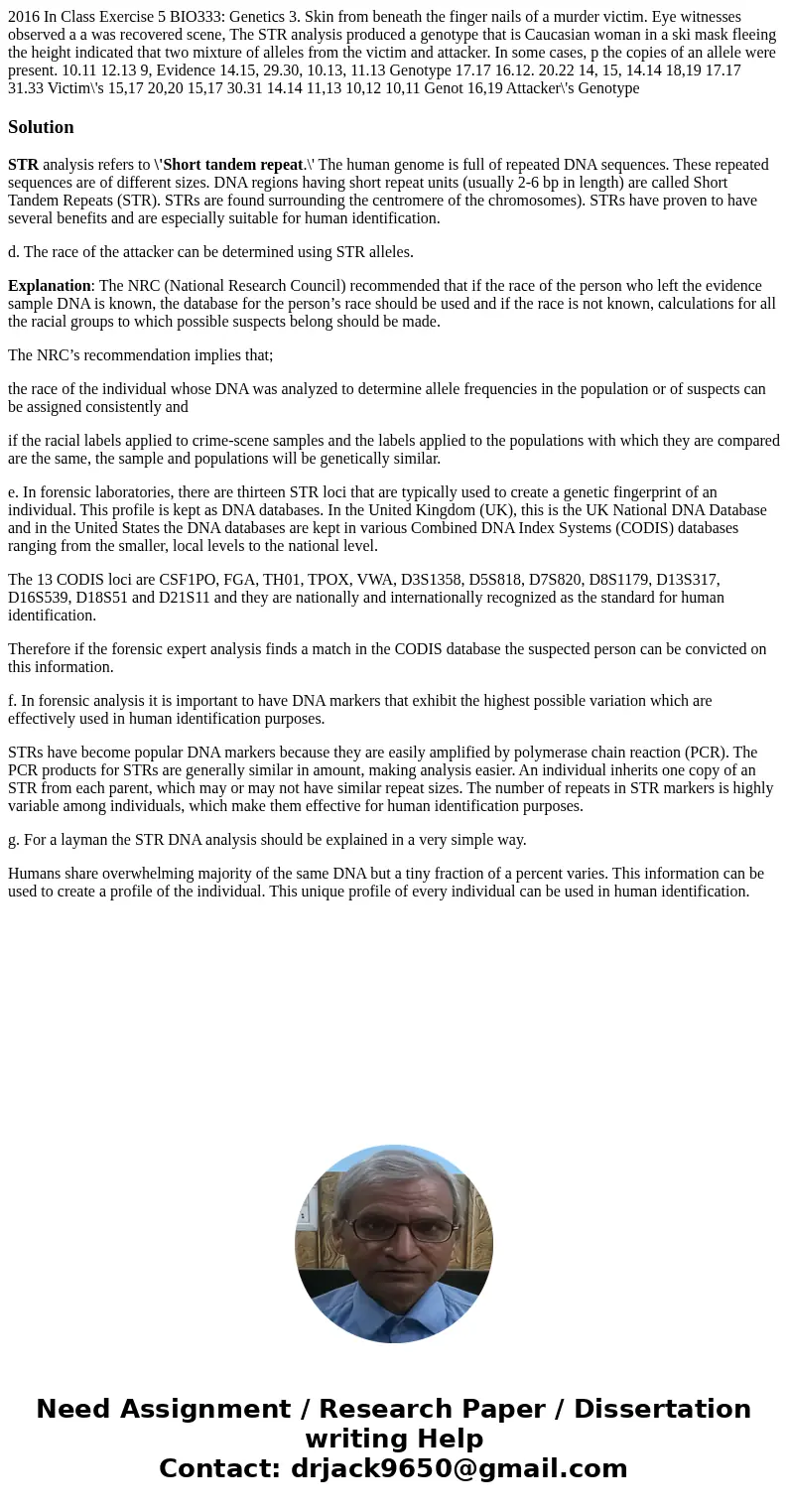2016 In Class Exercise 5 BIO333 Genetics 3 Skin from beneath
Solution
STR analysis refers to \'Short tandem repeat.\' The human genome is full of repeated DNA sequences. These repeated sequences are of different sizes. DNA regions having short repeat units (usually 2-6 bp in length) are called Short Tandem Repeats (STR). STRs are found surrounding the centromere of the chromosomes). STRs have proven to have several benefits and are especially suitable for human identification.
d. The race of the attacker can be determined using STR alleles.
Explanation: The NRC (National Research Council) recommended that if the race of the person who left the evidence sample DNA is known, the database for the person’s race should be used and if the race is not known, calculations for all the racial groups to which possible suspects belong should be made.
The NRC’s recommendation implies that;
the race of the individual whose DNA was analyzed to determine allele frequencies in the population or of suspects can be assigned consistently and
if the racial labels applied to crime-scene samples and the labels applied to the populations with which they are compared are the same, the sample and populations will be genetically similar.
e. In forensic laboratories, there are thirteen STR loci that are typically used to create a genetic fingerprint of an individual. This profile is kept as DNA databases. In the United Kingdom (UK), this is the UK National DNA Database and in the United States the DNA databases are kept in various Combined DNA Index Systems (CODIS) databases ranging from the smaller, local levels to the national level.
The 13 CODIS loci are CSF1PO, FGA, TH01, TPOX, VWA, D3S1358, D5S818, D7S820, D8S1179, D13S317, D16S539, D18S51 and D21S11 and they are nationally and internationally recognized as the standard for human identification.
Therefore if the forensic expert analysis finds a match in the CODIS database the suspected person can be convicted on this information.
f. In forensic analysis it is important to have DNA markers that exhibit the highest possible variation which are effectively used in human identification purposes.
STRs have become popular DNA markers because they are easily amplified by polymerase chain reaction (PCR). The PCR products for STRs are generally similar in amount, making analysis easier. An individual inherits one copy of an STR from each parent, which may or may not have similar repeat sizes. The number of repeats in STR markers is highly variable among individuals, which make them effective for human identification purposes.
g. For a layman the STR DNA analysis should be explained in a very simple way.
Humans share overwhelming majority of the same DNA but a tiny fraction of a percent varies. This information can be used to create a profile of the individual. This unique profile of every individual can be used in human identification.

 Homework Sourse
Homework Sourse